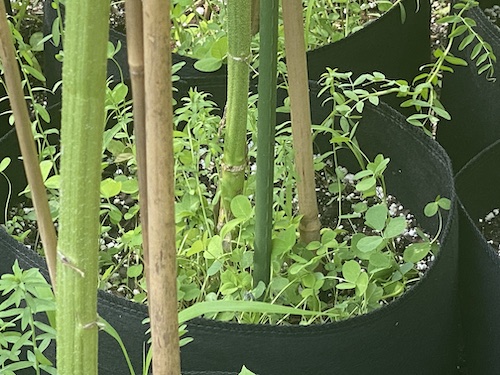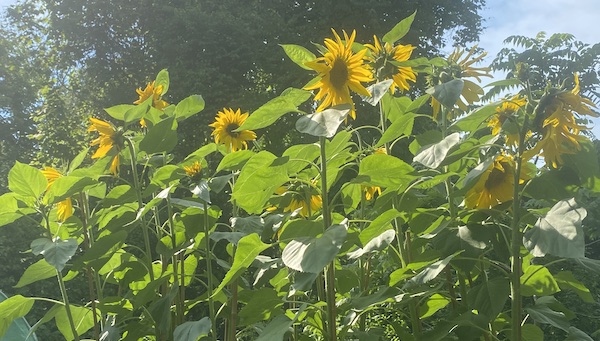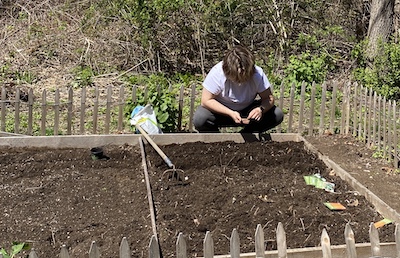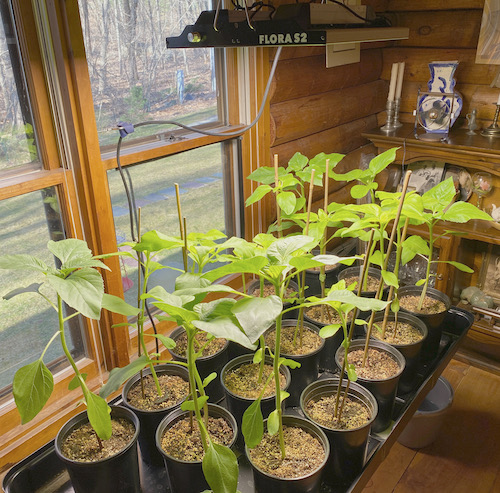It’s June and gardening season is on full tilt! And you can count on New England Hydroponics to have all the soil, amendments, and nutrients you could ever need to make your garden a success.
To me, last summer’s family project blog on growing an outdoor garden was akin to Gardening 101 – a broad brush overview of veggie and flower gardening. It was a humbling experience. Because while I had reasonably good success as I learned (it’s a little different growing outdoors vs indoors, where I’ve gardened over 8 years), and my advice was valid as reviewed by my peers, my veggies and flowers were all over the board.
As I reviewed the outcomes of my harvests at season’s end, it became clear to me I was trying to do too much in my garden. Sure, I got lots of string beans and the like, but it became a hassle to keep ahead of the weeds and even just to harvest all of said green beans, to say nothing about Snow Peas. And yes, it was relaxing, which was my first gardening goal. Just not all that satisfying.
This year, when I was planning back in April, I decided to take a more controllable approach to my garden. That is, to create more function and connection by creating a central strategy (what you’re going to do to achieve an outcome) and then formulating tactics (how you’re going to achieve your strategy) I could follow, especially with my very busy schedule.
Garden Strategy
Primary: to create a purpose for my garden, which in my case was to grow sunflowers to provide for my winter bird feeding habit.
Secondary: To design a garden that would emulate how Mother Nature’s grand design connects us to a better understanding of the world around us: to create awe.
Garden Tactics

1.Focus on growing sunflowers; start plants indoors
2.Focus on veggies I like, but that my wife won’t buy for the family at the grocery store: Beets, Brussel Sprouts, Spinach, Onions, Cauliflower
3.To plant additional flowers to add color and life to my garden
4.To use a cover crop – in my case a blend of clovers (see photo right) – to constantly feed the root zone of my big plants organically; and to provide compost for next year’s garden. (This may have been my smartest move this year!)
5. To reduce the size of my garden to a more manageable plot (see picture below of my son, who now controls 40% of what I planted last year).
The Case For Designing a Purpose
As a brand and design guy by trade, I’ve always been interested in the character of design versus decoration; and the contribution of both towards the quality of our lives. It’s been a life-long study that has led me to better understand and practice the design disciplines related to my business; and also in my home and personal life.Too as a dad, design is a concept I’ve brought to the attention of my sons, with the hope it will contribute to their living more connected, meaningful and rich lives.
How? Well, first it would help to define both terms. In short, decoration is something created to be pretty, and is often symmetrically pleasing. Decoration typically exists for its own reason such an event, a gift or even a table centerpiece; but unless it is anchored in a meaningful environment, or its elements are connected as they are created (my flower person is a true designer), its effect is short term and fleeting.
Design is what connects you to the world around you, connection and function at the very core of its definition.
A concrete object or a plan for an actionable outcome, design is bigger in scope than decoration; it goes well beyond pretty, and in fact, may not be pretty at all at first glance.
But in its balance, function, and connection it enhances the quality of our lives and becomes beautiful.
The Top of The Design Food Chain

In Mother Nature you find the epitome of design. In its balance and function, there is no design more perfect. And even its rare symmetry, a snowflake for instance, its function and environment prompts connection and wonder for those curious enough to recognize what they see.
For me, in my second season of veggie and flower gardening, creating a garden has become more than planting decorative rows of this or that look neat and orderly. In fact, I can only smile at the lessons nature taught me my first year outside, where my first garden layout and seeding was neatly laid out in a stoke of functional “design” and manipulative brilliance. Sure was pretty in its order.
That is, until the forces of nature brushed my symmetrical decorative arrogance aside with string beans that overran the garden, and sunflowers that got eaten by deer or bunnies before they were 4” tall.
The simple lesson for me was this: planting just for the sake of planting may not be enough for great harvest outcomes. We cannot push nature and expect to control it; it has a mind of its own.

But, if we are deliberate, and define the purpose of our garden, then it’s possible to create a strategy to achieve our goals. It becomes real, with predictive outcomes based upon a do-able plan rather than unforseen chaos.
In short, it’s not about me controlling nature. It’s about observing what the plants do under a set of circumstances and environments, and then trying to anticipate and emulate what Mother Nature would do. And about nurturing and giving plants the resources they need to reach their genetic and harvest maturity.
Most importantly too for me, it’s about having a specific goal that keeps me interested.
In Quest of Sunflowers, Beets, Cauliflower, Brussel Sprouts, Onions & Chamomile
Last year, never having grown an outdoor garden, I decided to ‘kitchen sink’ my 11 x 7 plot. That is, grow everything I could (except the kitchen sink). And, while I had some success, it got ahead of me fast.
Part of it was not knowing the difference between weeds and what my plants looked like as infants. And the bigger part was my sense I could breeze along, weeding as the spirit moved me rather than when it was needed.
Then there was my aforementioned string beans. To be sure, I got a big ongoing harvest, but the plants just sprawled over all my garden; I had string bean plants at all corners of my plot.
And that’s not to say nothing on the matter of daily harvests. What’s more, my family’s appetite for them was far less than I’d anticipated; I had so many I had to parboil and freeze a bunch, which is not a bad thing, but I can probably buy frozen string beans at the market for less.

This year I’ve focused on one primary (fun) goal: to grow mammoth sunflowers that will yield seeds and food for my winter birds. And, as an outcome of my intense focus on this goal, a funny thing has happened. I had started my seeds indoors back in early April using a new FloraGear FLORA S1 and then a FLORA S2 grow light, and transplanted them to larger pots outside in Mid-May when the nights became warm enough, when they were about 6’ tall.
And just 10 days later, my first flower emerged. I was simply elated. And it wasn't long before my sunflowers reached 8" tall, and all opened, looking more like August than June! (That's me (I'm 5'9") in my sunflower garden in top picture the first week of June.)
My grand design seems to be working with my beets, and my other few crops too – my two cauliflower and Brussel Sprout starts are well under way. And my spinach is already providing me baby greens for my nightly salads.
I’m in control of my garden for the first time ever. There’re almost no weeds. And while it was fun watching last year’s many crops pop up, I’m far more satisfied this year.
Why? Well maybe I’m a control freak but I think there’s more to it than that. I can focus more on what makes each crop successful, and keep up with them, including thinning recommendations for each type of veggie or flower. And can attend to them, knowing I don’t have to rush through the tasks to still have the time to go play golf now and then.
And probably most fun of all, I now thoroughly enjoy looking at the beautiful form of each plant and pondering how it fits in Mother Nature’s grand scheme of things. So along with the promise of a harvest comes the things my body and spirit needs most: a moment or two to relax and the joy of wonder. And to experience wonder is to experience awe.
You’d almost think I did it by design.
Tom Lanen is a family man and principal of Thomas Marketing Services (ThomasBoston.com), and ‘marketing guy’ for New England Hydroponics 4 stores and its online store. When not in his outdoor garden contemplating Nature’s Grand Design, he’s gratefully enjoying the passing of time with his wife and adult sons, one of whom has got the gardening bug too.


